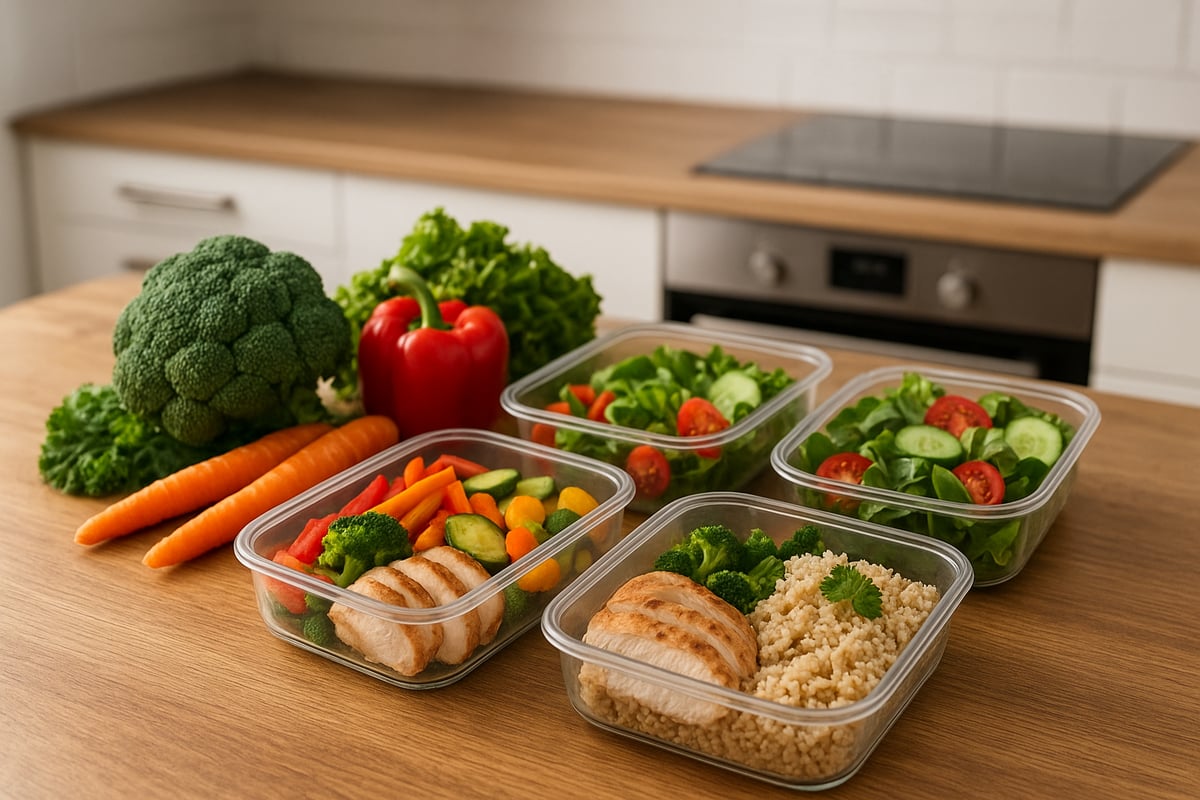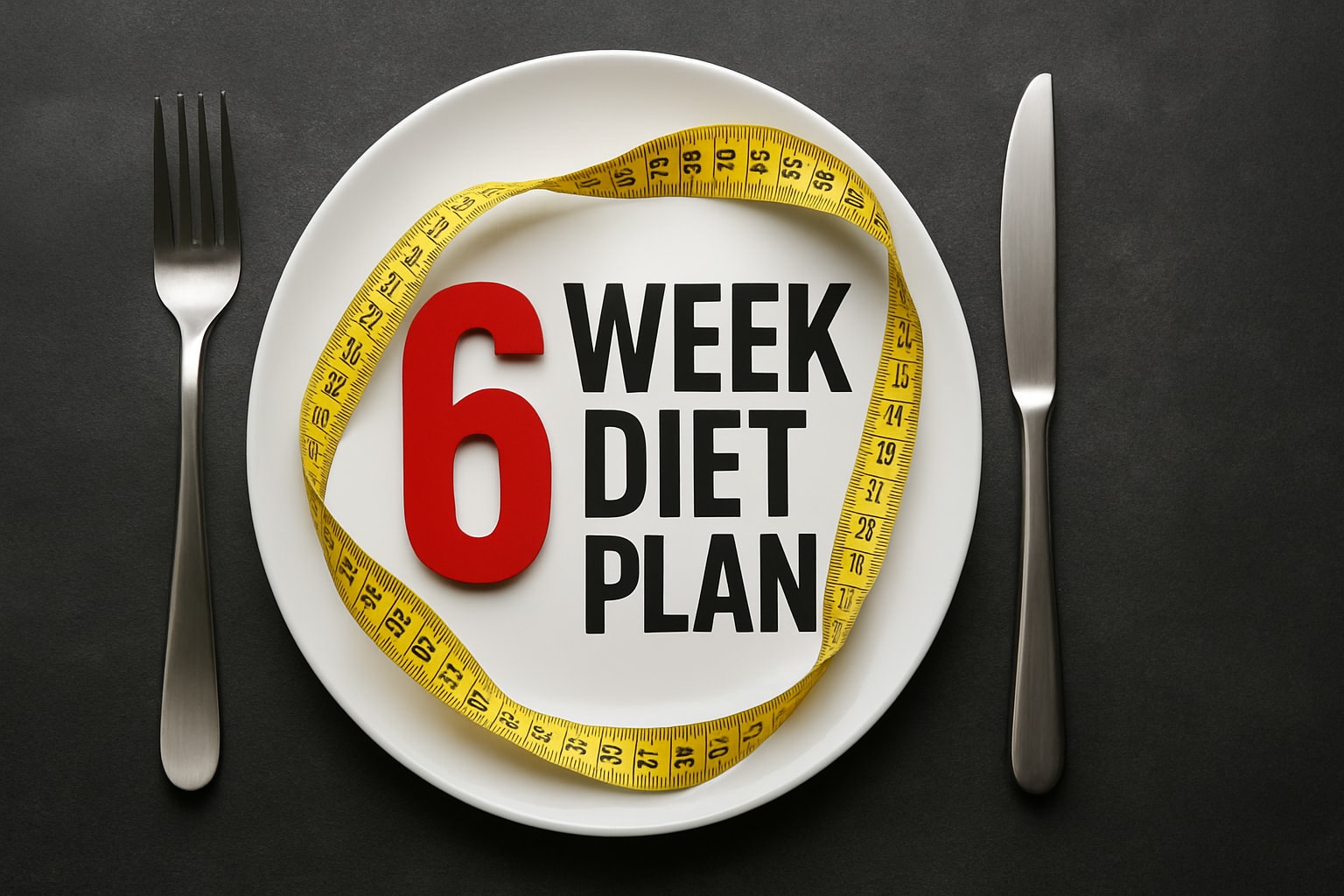Ready to transform your body and mind in 2025? Choosing the right weight loss training program can be your game-changer. This comprehensive guide is built for beginners and will empower you with the latest, science-backed strategies to start a sustainable weight loss journey. You will discover how to set realistic goals, create a balanced workout plan, master nutrition basics, overcome mental barriers, and track your progress for lasting results. With practical steps and proven methods, you can take control and begin your transformation today.
Understanding Weight Loss Fundamentals
Embarking on a weight loss training program can feel overwhelming, but understanding the fundamentals provides a solid foundation for success. By diving into the science, setting the right goals, fostering a positive mindset, and avoiding common mistakes, you set yourself up for sustainable progress.

The Science Behind Weight Loss
The core principle of any weight loss training program is achieving a calorie deficit, meaning you burn more calories than you consume. Metabolism, the rate at which your body uses energy, can be influenced by factors like age and genetics, but regular exercise boosts your metabolic rate and supports fat loss while preserving muscle.
Exercise works hand in hand with nutrition. Research consistently shows that combining physical activity with healthy eating leads to more significant fat loss than diet alone. However, beware of common myths, such as the idea you can target fat loss in specific areas through “spot reduction.” In reality, fat loss happens throughout the body.
Understanding these fundamentals helps you make informed decisions as you design your weight loss training program.
Setting Realistic and Motivating Goals
To succeed with your weight loss training program, it’s crucial to set goals that are Specific, Measurable, Achievable, Relevant, and Time-bound (SMART). Start by assessing your current fitness level and deciding what is realistic for you.
Short-term goals, like aiming to lose 1 to 2 pounds per week, keep you motivated and align with recommendations from the CDC for sustainable weight loss. Long-term goals, such as fitting into a certain clothing size or improving endurance, provide a bigger picture to work toward.
Tailoring your goals to your unique starting point makes progress more attainable and satisfying.
The Importance of Mindset and Behavioral Change
Your mindset plays a pivotal role in how you approach a weight loss training program. Focusing on consistency rather than perfection leads to lasting results. It’s normal to have setbacks, but learning to overcome negative self-talk and self-sabotage can keep you on track.
Research shows that interventions focused on mindset, such as positive affirmations and self-reflection, significantly boost adherence to weight loss plans. Building healthy habits and celebrating small wins foster a sense of accomplishment and reinforce positive behavioral changes.
A resilient mindset transforms obstacles into opportunities for growth.
Common Beginner Mistakes to Avoid
Many beginners make mistakes that can derail progress in a weight loss training program. Overtraining or undertraining, neglecting proper nutrition and recovery, and setting unrealistic expectations are frequent pitfalls. Skipping resistance training is another common error, as building muscle helps increase metabolism and long-term fat loss.
To avoid these issues, prioritize balanced workouts, adequate rest, and a sustainable nutrition plan. For more insights, explore the Common mistakes when trying to lose weight fast to identify and sidestep typical obstacles.
By understanding and addressing these challenges, you can stay on the path to lasting results.
Creating Your Weight Loss Training Program
Designing an effective weight loss training program is about more than just burning calories. It is about building a foundation for lifelong health, maximizing results, and enjoying the process. Each step you take, from choosing exercise types to integrating mental strategies, moves you closer to your goals. Let us break down how to craft a plan that fits your life and sets you up for lasting success.
Choosing the Right Exercise Types
A well-rounded weight loss training program blends different exercise types for optimal fat loss and muscle retention. Cardio, such as brisk walking or cycling, increases calorie burn and supports heart health. Resistance training, like bodyweight exercises or dumbbells, helps preserve muscle while shedding fat.
HIIT (high-intensity interval training) offers a time-efficient way to boost metabolism, while steady-state cardio is great for building endurance. Flexibility and mobility work, including stretching or yoga, keep your body agile and reduce injury risk. Studies consistently show that combining cardio and resistance training leads to the best results.
Consider reading 8 essential tips to choose the right weight loss program to help you select the best mix for your needs.
Sample Weekly Workout Structure for Beginners
For most beginners, a simple weekly structure helps build consistency in your weight loss training program. Start with three days of full-body strength training, focusing on major muscle groups. Add two days dedicated to cardio, such as jogging, cycling, or swimming, at moderate intensity. Reserve two active recovery days for lighter activities like walking, gentle yoga, or stretching.
Here is an example schedule:
- Monday: Strength
- Tuesday: Cardio
- Wednesday: Strength
- Thursday: Active recovery
- Friday: Strength
- Saturday: Cardio
- Sunday: Active recovery
Progress by adding reps, sets, or intensity every few weeks. Adapt the plan to your fitness level and always listen to your body.
How Much Exercise Do You Really Need?
Finding the right dose of exercise for your weight loss training program is key. The CDC and WHO recommend 150 to 300 minutes of moderate-intensity activity per week for adults. This can be split into 30-minute sessions, five to six days a week, making it manageable for busy schedules.
If time is tight, try shorter sessions throughout the day. According to the CDC guidelines on physical activity, even small bursts of movement add up to big changes. Remember, consistency trumps perfection.
Home Workouts vs. Gym Workouts
Deciding between home and gym workouts comes down to your preferences and resources. Home workouts offer flexibility and privacy, requiring minimal equipment such as resistance bands or dumbbells. Bodyweight circuits, like squats, push-ups, and planks, are highly effective for a weight loss training program at home.
Gym workouts provide access to more equipment and a motivating environment. The right choice is the one you will stick with. Explore 5 ways to accelerate weight loss by boosting metabolism for tips on making your workouts more effective, wherever you train.
Recovery and Injury Prevention
Recovery is a critical part of any weight loss training program. Schedule at least one or two rest days per week to allow muscles to repair and grow. Incorporate stretching, foam rolling, and adequate sleep to minimize soreness and prevent overuse injuries.
Signs of overtraining include persistent fatigue, mood changes, and declining performance. Prioritize listening to your body and adjust workouts as needed. For more advice, see why rest days are essential and build recovery into your routine for sustainable progress.
How Neuroscience-Based Apps Like Oneleaf Support Weight Loss
Integrating mental training into your weight loss training program can unlock greater results. Apps like Oneleaf use neuroscience and self-hypnosis to help rewire habits, reduce cravings, and boost motivation. Users often report finding it easier to stick with their routines and make healthier choices.

Combining these mental strategies with physical training accelerates change. Explore 10 powerful affirmations for successful weight loss and weight loss program testimonials for real-life inspiration. Supporting research continues to show that addressing both mind and body leads to lasting transformation.
Nutrition Essentials for Weight Loss
Achieving lasting results with any weight loss training program hinges on sound nutrition. The right food choices fuel your workouts, help preserve muscle, and make your progress sustainable. Let’s break down the essentials you need to succeed, from understanding calories and macros to navigating real-life eating situations.

Understanding Caloric Needs and Macros
The foundation of every weight loss training program is understanding your caloric needs and how macros impact your journey. Start by calculating your maintenance calories using a reputable online calculator or a health professional’s guidance. Once you know this number, create a moderate calorie deficit—usually 300 to 500 calories per day—to encourage fat loss while preserving energy for workouts.
Macros—protein, carbohydrates, and fats—each play a unique role. For beginners, a common macro breakdown is:
- Protein: 25-30%
- Carbohydrates: 40-50%
- Fats: 20-30%
Prioritizing protein supports muscle retention, especially when combined with strength training. Explore more on how nutrition impacts your results in this Oneleaf Journal article. Remember, your weight loss training program is most effective when nutrition and exercise work together.
Meal Planning and Prep Tips
Smart meal planning sets the stage for consistency in your weight loss training program. Begin by mapping out your weekly meals and snacks. Batch cooking saves time—prepare proteins, grains, and veggies in advance, then mix and match for balanced meals. Keep healthy staples on hand, such as Greek yogurt, frozen vegetables, and whole grains.
Use shopping lists to avoid impulse buys, and prep grab-and-go options for busy days. The CDC offers practical steps for losing weight, including how to build a balanced plate and plan ahead for success.
For more meal-prep inspiration, check out Oneleaf Journal’s guide to healthy meal prepping. To simplify your routine, try the Oneleaf weight loss program for structured support and meal ideas.
Healthy Eating Habits for Sustainable Results
Developing sustainable eating habits is crucial for any weight loss training program. Mindful eating helps you recognize hunger and fullness cues, making it easier to avoid overeating. Practice slowing down at meals—put your fork down between bites and savor each flavor.
Portion control does not mean restriction. Use smaller plates, dish out single servings, and check in with your body’s signals. For more strategies, explore Oneleaf Journal’s article on mindful eating.
Celebrate non-scale victories, like improved energy or better sleep, that come from healthy eating. The Oneleaf weight loss program offers tools to reinforce positive habits every day.
Navigating Social Situations and Eating Out
Social events and dining out can challenge your weight loss training program, but with preparation, you can stay on track. Review menus ahead of time and choose grilled, baked, or steamed options. Swap high-calorie sides for salads or veggies and ask for dressings on the side.
If you face peer pressure, remember your goals and offer to share dishes or order a lighter appetizer. For more tips, read Oneleaf Journal’s advice on eating out.
Plan ahead for special occasions by adjusting meals earlier in the day. Stay flexible, and don’t stress over occasional indulgences. The Oneleaf weight loss program provides ongoing guidance for real-life situations.
Supplements: What’s Worth Considering?
Supplements can support a weight loss training program, but they are not magic bullets. Evidence-based options include:
- Protein powder: convenient for meeting protein needs
- Fiber supplements: helpful for fullness if your diet lacks fiber
- Multivitamins: fill nutritional gaps
Be wary of fad diet pills or unregulated products, which may be unsafe. Always check with a healthcare provider before starting new supplements.
For more insights, see Oneleaf Journal’s breakdown of supplements. Remember, the Oneleaf weight loss program combines nutrition, exercise, and behavioral support for holistic results.
Overcoming Mental and Emotional Barriers
Starting a weight loss training program is not just a physical journey, but a mental and emotional one as well. True transformation requires understanding your behaviors, reshaping your mindset, and building habits that last. This section will guide you through the most common psychological challenges and proven strategies to overcome them, so you can confidently progress in your weight loss training program.

Identifying Triggers for Overeating
Recognizing what prompts you to eat beyond hunger is essential in any weight loss training program. Emotional eating, stress, boredom, and even social cues can all trigger overeating. Begin by keeping a food and mood journal. Write down what you eat, when, and how you feel before and after. This self-monitoring technique helps reveal patterns and moments when you are most vulnerable to cravings.
When you spot a trigger, pause and ask yourself if you are truly hungry or responding to emotion. Practice techniques such as deep breathing or going for a short walk to break the automatic response. For more insights, read the Oneleaf Journal article on emotional eating.
Over time, identifying these triggers empowers you to make conscious choices that support your weight loss training program. Remember, awareness is the first step to change.
Building Motivation and Accountability
Staying motivated throughout your weight loss training program can be challenging, especially when progress slows. Building a strong support network is crucial. Share your goals with friends, family, or join an online community. Accountability partners can check in with you, celebrate your wins, and help you refocus during tough times.
Set up systems to track your progress. Use habit-tracking apps, daily check-ins, or even a simple calendar to mark completed workouts. For science-backed ways to stay motivated, explore this Oneleaf Journal article.
Celebrating small victories, like sticking to your routine for a week, reinforces positive behaviors. Remember, each step forward in your weight loss training program builds lasting momentum. For extra guidance and structure, consider the Oneleaf weight loss program.
Managing Stress and Sleep for Better Results
Stress and lack of sleep can undermine your weight loss training program by disrupting hormones that regulate hunger and metabolism. Chronic stress increases cortisol, which can drive cravings and fat storage. Prioritize stress reduction techniques such as meditation, yoga, or even short daily walks.
Good sleep hygiene is equally important. Aim for 7–9 hours of sleep per night. Establish a calming bedtime routine, limit screen time, and keep your sleep environment dark and cool. Research shows that better sleep supports appetite control and energy levels.
If you struggle to unwind, try guided relaxation exercises or self-hypnosis. For practical tips, check out the Oneleaf Journal article on stress management. Consistent stress reduction and quality sleep will enhance your results in any weight loss training program.
Rewiring Habits for Lasting Change
Sustainable results from a weight loss training program depend on building new, healthier habits. Habits are formed through repetition and cues. Start by pairing new behaviors with existing routines, such as doing a short workout after your morning coffee.
Use reminders and visual cues to keep new habits top of mind. The process of habit formation is supported by neuroscience, as discussed in the Oneleaf Journal article on habit change. Evidence from a systematic review on weight loss interventions shows that combining behavioral strategies with physical activity and nutrition increases long-term success.
Stay patient—lasting change comes from consistency, not perfection. Consider structured programs like the Oneleaf weight loss program to reinforce new habits.
When to Seek Professional Help
Sometimes, barriers in a weight loss training program go beyond what you can tackle alone. If you notice persistent emotional eating, overwhelming stress, or a lack of progress despite consistent effort, it may be time to seek professional support.
A registered dietitian, weight loss coach, or therapist can help you identify hidden obstacles and provide personalized strategies. Professional guidance is especially important if you have a history of disordered eating, depression, or anxiety. For more, read this Oneleaf Journal article on when to seek help.
Remember, asking for help is a sign of strength. With expert support, you can break through barriers and achieve your goals with a weight loss training program. Explore the Oneleaf weight loss program for accessible guidance and resources.
Tracking Progress and Staying Consistent
Staying on track with your weight loss training program means more than just watching the number on the scale. Progress comes in many forms, and consistency is the secret ingredient to lasting results. By using science-backed strategies, practical tools, and a positive mindset, you can make your journey both measurable and motivating.
How to Measure Progress Beyond the Scale
Your weight loss training program should focus on more than just pounds lost. Track body measurements, such as waist, hips, and arms, each month to see real changes. Take progress photos every few weeks for visual motivation.
Other key metrics include increased energy, better sleep, and improved workout performance. Keep a fitness journal to note personal records, endurance, or flexibility gains. These victories often come before major weight changes.
Research from the Physical activity levels and weight control study highlights that monitoring multiple indicators leads to greater weight management success. For more tips on progress tracking, see this Oneleaf Journal guide.
Adjusting Your Program Over Time
As you progress, your weight loss training program should evolve. If your workouts start to feel easy, gradually increase intensity, duration, or resistance. This keeps your body challenged and helps break through plateaus.
Nutrition adjustments are also key. As you lose weight, recalculate your calorie needs and adjust your food intake. When progress slows, try new activities or tweak your meal plan.
Use strategies from this Oneleaf Journal article to overcome plateaus. Remember, adaptation is a sign of real progress and commitment to your goals.
Staying Motivated Through Setbacks
Everyone faces setbacks on their weight loss training program journey. Instead of getting discouraged, focus on celebrating small wins, like completing a tough workout or making a healthy food choice.
Reflect on your achievements and remind yourself why you started. Success stories in this Oneleaf Journal post show that persistence pays off. Keep your goals visible and revisit them often to stay inspired.
Remember, consistency beats perfection. Each step forward is a victory, no matter how small.
Tools and Apps to Support Your Journey
Technology can make your weight loss training program easier to follow. Use fitness trackers to log workouts, nutrition apps for meal planning, and reminders to stay accountable.
Community features in apps provide motivation and support. Consider neuroscience-based solutions like the Oneleaf weight loss program for integrated mental and physical coaching. For more resources, see this Oneleaf Journal article.
Find tools that fit your lifestyle to boost consistency and engagement.
Building a Supportive Environment
Your environment plays a major role in the success of your weight loss training program. Set up a dedicated workout space at home, stock your kitchen with healthy options, and involve family or friends in your journey.
Share your goals with loved ones and invite them to join you for walks or healthy meals. Supportive environments reinforce positive habits and make setbacks easier to overcome.
For more ideas on building lasting routines, explore this Oneleaf Journal article.
Frequently Asked Questions About Weight Loss Training Programs
Starting a weight loss training program often comes with many questions. Here, we address the most common beginner concerns with clear, actionable advice, expert insights, and helpful resources to support your journey.
How Fast Can I Expect to Lose Weight?
The pace of progress in any weight loss training program depends on several factors, including your starting point, genetics, and consistency. Most experts, including the CDC, recommend aiming to lose 1 to 2 pounds per week for sustainable results.
Quick fixes may seem tempting, but slow, steady progress is healthier and more likely to last. Factors like age, metabolism, and medical history can also impact your rate of weight loss.
For more insight, explore this Oneleaf Journal article on sustainable weight loss. For personalized support, consider the weight loss program.
Is Cardio or Strength Training Better for Weight Loss?
Many people wonder if the best weight loss training program should focus on cardio, strength training, or both. Research shows a combination yields the greatest fat loss and muscle retention.
Cardio burns calories and improves heart health, while strength training preserves lean muscle and boosts metabolism. For optimal results, structure your week with both types of exercise.
Learn more in the Oneleaf Journal article about effective training. To get started, try this weight loss program.
What If I Have a Medical Condition?
If you have a health condition, always consult your doctor before starting any weight loss training program. Conditions like diabetes or joint pain may require tailored workouts or dietary adjustments.
Professional guidance ensures your safety and maximizes results. Many programs, including the weight loss program, can be adapted for various needs.
For tips on exercising safely with health concerns, visit this Oneleaf Journal guide. Your well-being comes first.
Can I Lose Weight Without Strict Dieting?
Absolutely. A successful weight loss training program does not require extreme restrictions. Focus on mindful eating, portion control, and building healthy habits for lasting change.
Flexible approaches are proven to work, as highlighted in this Oneleaf Journal article on mindful eating. Celebrate small wins and progress, not perfection.
Explore more non-restrictive strategies with this weight loss program. Sustainable change is possible for everyone.
You’ve learned how the right mindset, realistic goals, and science-backed strategies can make your weight loss journey in 2025 both achievable and sustainable. If you’re ready to put these ideas into action and discover a personalized approach that fits your lifestyle, I encourage you to take the next step. With just a few questions, you’ll receive tailored guidance aligned with what you’ve learned—no rigid diets or guilt, just neuroscience-based support to help you build lasting habits. Start your journey today by taking the first step with the Start Quizz.















